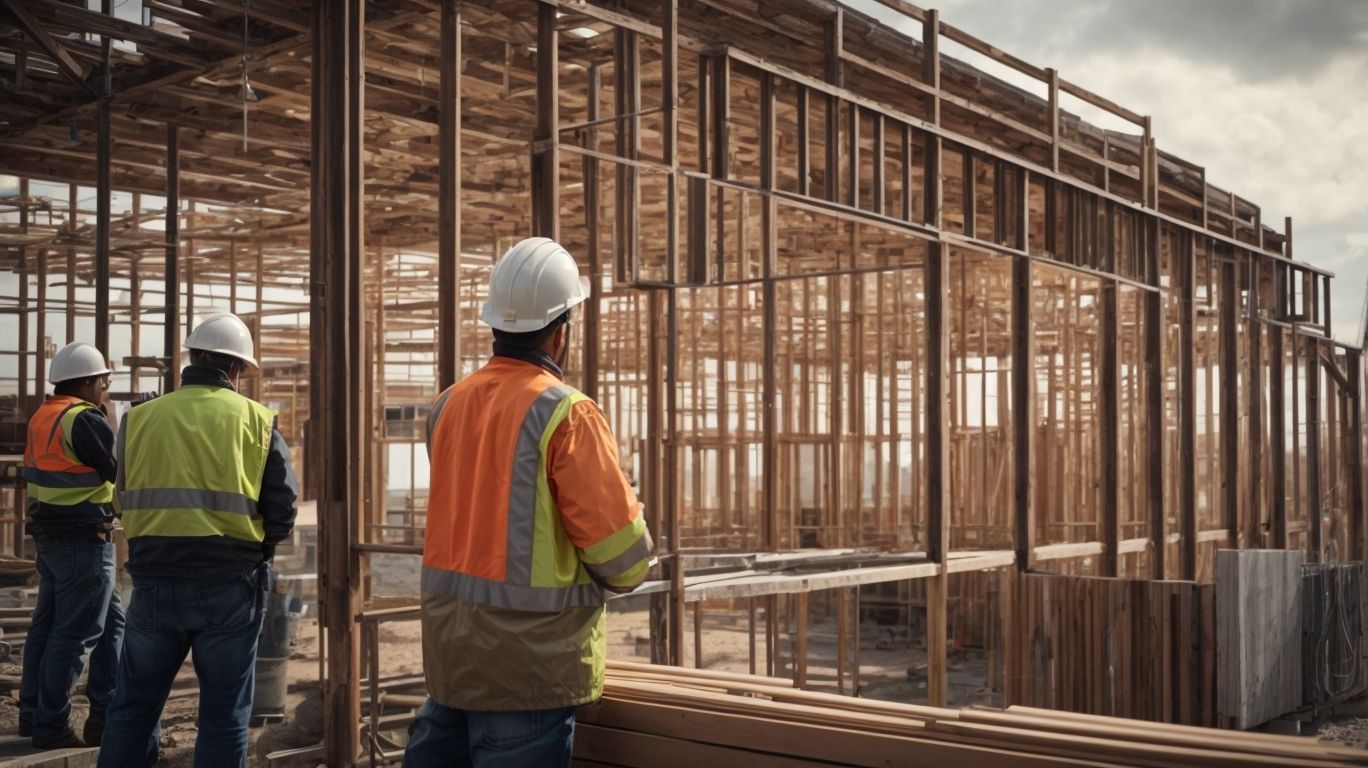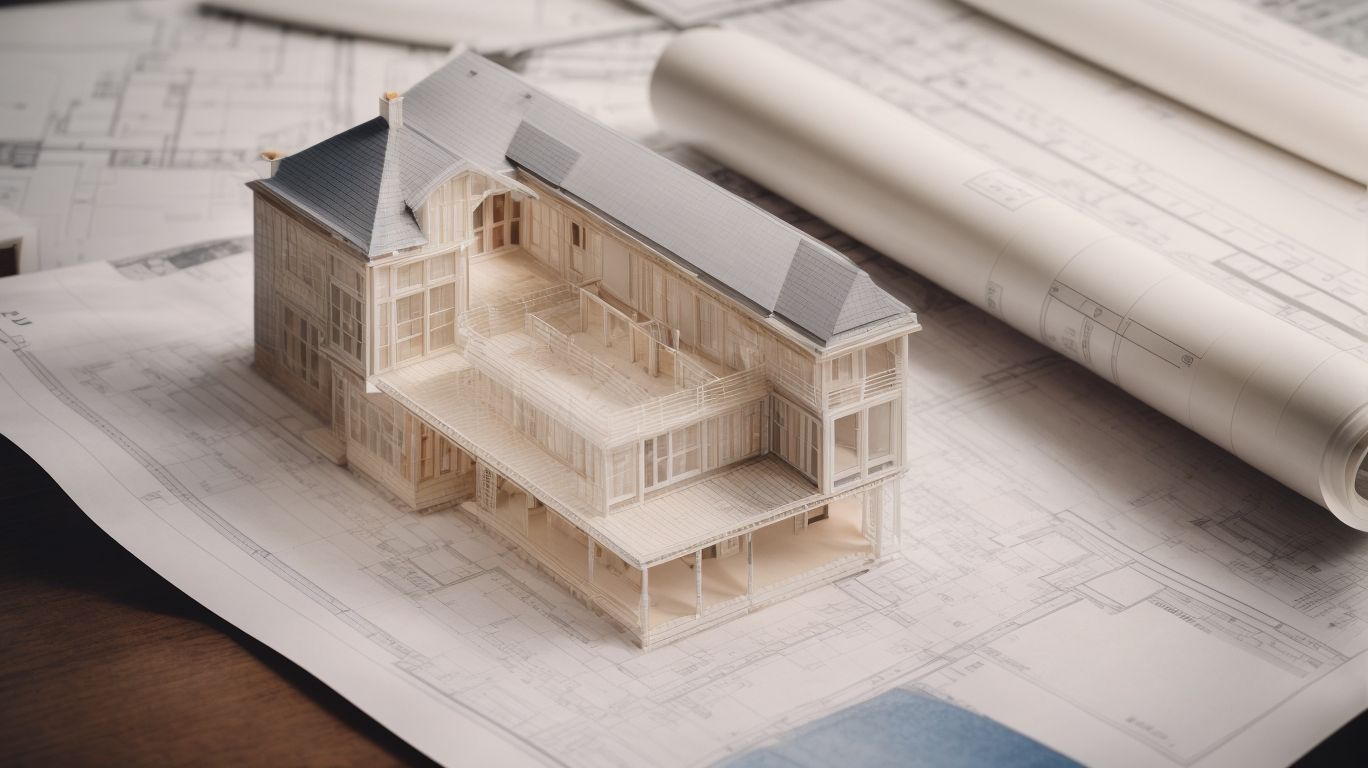
Common Inspection Requirements for Structural Engineering Projects
Are you curious about the common inspection requirements for structural engineering projects? From foundation and framing inspections to electrical and plumbing checks, there are numerous crucial steps in ensuring the safety and integrity of a building.
In this article, we will explore the importance of inspections in structural engineering projects, who conducts them, and how often they should be carried out. Whether you’re a professional in the field or simply interested in learning more, this article has something for everyone.
What Is Structural Engineering?
Structural engineering is a specialized branch of civil engineering that deals with the design and analysis of structures to ensure their compliance with construction regulations, safety standards, and engineering guidelines.
Structural engineering is essential for the stability, durability, and safety of buildings and infrastructure. It involves evaluating designs for factors like load-bearing capacity, materials, and environmental impacts. Adhering to safety regulations and codes is crucial to mitigate risks and ensure the longevity of structures.
As responsible professionals, structural engineers must prioritize rigorous attention to engineering principles in construction projects. This includes considerations for seismic activity, wind resistance, and other safety measures to safeguard occupants and the public.
What Are the Common Inspection Requirements for Structural Engineering Projects?
The common inspection requirements for structural engineering projects encompass a comprehensive set of criteria and quality assurance measures to ensure compliance checks and adherence to inspection procedures throughout the project lifecycle.
Structural engineering projects involve thorough evaluations of various aspects, including structural integrity, material quality, adherence to building codes, and compliance with design specifications. Safety considerations are also a top priority in these evaluations.
Inspections are conducted with meticulous attention to detail, covering foundations, load-bearing elements, connections, and structural components. This ensures the structural robustness and durability of the project. Quality assurance also involves regular inspections at key milestones, such as during construction, to identify and address any potential issues. These measures contribute to the overall safety and reliability of the final product.
Foundation Inspection
Foundation inspection involves rigorous assessments of the structural integrity, material compliance, and adherence to the prescribed design standards to ensure the stability and safety of the foundational elements in construction.
This process often incorporates structural analysis techniques, such as evaluating the load-bearing capacity, the presence of any cracks, and the overall condition of the foundation.
Material compliance assessments play a crucial role in determining if the materials used meet the necessary standards and are suitable for the intended purpose.
The alignment with the approved structural design is meticulously checked to identify any deviations that may compromise the stability or safety of the foundation.
Framing Inspection
Framing inspection involves meticulous checks for load-bearing elements, verification of compliance with construction standards, and overall project compliance to ensure the structural stability and integrity of the framing components.
When conducting a structural inspection, it is essential to assess the integrity of load-bearing walls, beams, and columns. This ensures that they can adequately support the structure. Compliance verification involves checking if the framing adheres to building codes and regulations. This includes examining important aspects such as proper spacing of studs, adequate fastening, and appropriate structural connections.
In addition to these specific requirements, broader project compliance also involves considerations for fire safety, energy efficiency, and environmental standards. These factors add a comprehensive layer of assessment to the framing inspection process, ensuring that the structure meets all necessary standards and regulations.
Roof Inspection
Roof inspections involve thorough assessments for hazard identification, adherence to safety standards, and identification of potential defects to ensure the structural soundness and safety of roofing systems in construction.
Roof inspections are crucial for maintaining a building’s integrity. They are especially important for safety, as they help prevent accidents and ensure compliance with regulations.
Early identification and addressing of defects can save costs and prevent safety hazards. This process requires attention to detail and expertise, as even minor issues can lead to bigger problems if left unattended.
Overall, roof inspections are essential for ensuring the durability and safety of any structure.
Electrical Inspection
Electrical inspection involves thorough compliance checks and oversight by professional engineers to ensure the safety and reliability of electrical systems in structural engineering projects.
It is essential to conduct electrical inspections to identify potential hazards and ensure installations meet industry standards and regulations.
Professional engineers play a critical role in these inspections, using their expertise and knowledge to evaluate the safety and performance of electrical systems.
During inspections, code compliance is a key focus to ensure that electrical work meets the requirements set by local and national codes. This minimizes the risk of hazards and promotes the longevity of the system.
Plumbing Inspection
Plumbing inspection involves comprehensive material testing, rigorous construction inspections, and detailed compliance verification to ensure the integrity and functionality of plumbing systems in line with structural engineering requirements.
Plumbing inspections are essential in identifying potential issues with materials used, such as corrosion or degradation over time. They also ensure that construction meets safety and efficiency standards.
Compliance verification involves meticulous scrutiny of plumbing installations, ensuring they adhere to building codes and regulations. This promotes public health and environmental safety.
By integrating these multifaceted aspects, plumbing inspections play a critical role in maintaining the reliability and performance of plumbing systems.
HVAC Inspection
HVAC inspection encompasses meticulous review of project documentation, adherence to building standards, and stringent quality control measures to ensure the efficient and compliant functioning of heating, ventilation, and air conditioning systems in structural engineering projects.
This includes a comprehensive assessment of the project plans, specifications, and equipment selections to verify their alignment with industry regulations and engineering principles.
By scrutinizing the installation, maintenance, and operational records, inspectors can identify areas that require attention or improvements to optimize system performance.
Quality control procedures involve rigorous testing and evaluation of HVAC components to validate their reliability, safety, and energy efficiency, ensuring that the systems operate seamlessly within the established parameters.
Fire Protection Inspection
Fire protection inspection involves rigorous risk assessment, diligent project supervision, and thorough compliance verification to ensure the effective implementation of fire safety measures within structural engineering projects.
This process is vital for identifying potential fire hazards, evaluating the adequacy of existing fire protection systems, and devising comprehensive plans to mitigate risks.
Project supervision requirements necessitate the constant oversight of construction and installation activities to guarantee that the fire protection systems are being implemented correctly and in adherence to relevant codes and standards.
Compliance verification involves thorough documentation and periodic audits to ensure that the installed fire protection measures comply with regulatory requirements and industry best practices.
Seismic Inspection
Seismic inspection entails adherence to technical specifications, comprehensive structural evaluations, and validation of project compliance to ensure the resilience and safety of structures against seismic activities in structural engineering projects.
Technical specification adherence mandates rigorous adherence to industry standards and codes, encompassing materials, design, and construction methods.
Structural evaluation processes involve assessing the integrity of building components, including foundations, beams, and columns, through non-destructive testing, analysis, and monitoring.
Ensuring broader project compliance requires coordination with local building regulations, environmental considerations, and community impact assessments to mitigate seismic risks effectively.
Wind Inspection
Wind inspection involves meticulous regulatory compliance, stringent code enforcement, and thorough site inspections to ensure the structural integrity and safety of buildings under varying wind forces in structural engineering projects.
Inspections are crucial in identifying and addressing potential hazards, ensuring that buildings comply with industry standards and local regulations.
Wind inspections are especially important in evaluating the impact of wind loads on building components, such as roofs, walls, and openings, to ensure their ability to withstand these forces.
By following thorough inspection protocols, structural engineers can improve the resilience and durability of buildings, reducing the risk of wind-related damage and protecting the safety of occupants and assets.
10. Materials Inspection
Materials inspection encompasses efficient project management, systematic material compliance checks, and validation of project approval to ensure the quality and suitability of materials used in structural engineering projects.
This multifaceted process involves coordinating with various stakeholders to align material specifications with project requirements. Project management plays a crucial role in overseeing the entire inspection process, from procurement to installation.
Material compliance checks involve verifying adherence to industry standards and regulations, ensuring safety and durability. The validation of project approval involves thorough documentation and review processes to guarantee that the chosen materials meet design and regulatory standards before implementation.
11. Structural Load Testing
Structural load testing involves comprehensive compliance verification, meticulous assessment of construction permits, and rigorous compliance checks to ensure the structural stability and load-bearing capacity of engineered elements in construction.
This process plays a vital role in the construction industry as it ensures that buildings, bridges, and other structures can withstand various physical forces and loads.
Compliance verification is essential for meeting building codes and safety standards, while thorough assessment of construction permits ensures that the planned structure aligns with the approved design and regulatory requirements.
Rigorous compliance checks guarantee that the construction process adheres to the established guidelines, contributing to the overall safety and durability of the built environment.
12. Construction Progress Inspection
Construction progress inspection involves ongoing compliance checks, rigorous quality assurance measures, and thorough compliance verification to monitor and maintain the structural integrity and adherence to construction standards throughout the project lifecycle.
Construction inspections involve monitoring the timeline and ensuring materials and workmanship meet industry standards. Compliance checks cover safety protocols, building codes, and environmental regulations.
Quality assurance measures may include material testing, structural assessments, and thorough documentation. Verification involves cross-referencing plans with completed work, site visits, and collaboration with stakeholders to address any issues.
13. Final Inspection
The final inspection is a comprehensive assessment encompassing defect identification, validation of project compliance, and meticulous compliance verification to ensure the structural soundness and readiness for occupancy of completed projects in structural engineering.
During the final inspection, inspectors meticulously examine every aspect of the completed project to verify its compliance with building codes, safety standards, and design specifications.
Any deviation from the approved plans or substandard workmanship is identified and recorded. Thorough documentation of all inspection findings is crucial for regulatory compliance and for providing a clear record of the project’s state at completion. This process plays a vital role in ensuring that completed structures are safe, functional, and in accordance with industry standards.
Why Are Inspections Important in Structural Engineering Projects?
Inspections are crucial in structural engineering projects as they generate detailed reports, facilitate risk assessments, ensure compliance checks, maintain quality control, and validate compliance verification, thus upholding the structural integrity and safety standards throughout the construction process.
These comprehensive reports provide essential insights into the condition of the structures, enabling engineers to identify potential hazards or weaknesses. By conducting risk assessments, engineers can prioritize safety measures, ensuring that the structures can withstand environmental forces and human occupancy.
Compliance checks play a vital role in confirming adherence to industry regulations and standards, while quality control measures help in maintaining the desired level of craftsmanship and material integrity. The process of compliance verification further enhances the credibility of the construction, assuring stakeholders of its safety and durability.
Who Conducts the Inspections?
Inspections in structural engineering projects are conducted by qualified professional engineers who oversee project compliance, perform rigorous compliance verification, adhere to predefined inspection procedures, and conduct thorough risk assessments to ensure structural integrity and safety standards.
Their involvement in project compliance oversight ensures that all aspects of the construction are in accordance with regulatory standards, codes, and specifications.
Professional engineers play a critical role in analyzing the safety and durability of the structures, identifying any potential hazards, and proposing corrective measures when necessary.
They are responsible for documenting their findings, communicating the results to relevant stakeholders, and recommending any necessary adjustments to ensure compliance and safety.
How Often Should Inspections Be Conducted?
The frequency of inspections in structural engineering projects is determined by local authorities, necessitating regular compliance checks, adherence to code compliance requirements, efficient project management, and continuous compliance verification to ensure the ongoing structural integrity and safety standards.
Ensuring safety and structural integrity in engineering projects relies on several key factors. Local authorities typically have specific requirements for inspection frequency, tailored to the project’s nature and scale. Regular compliance checks are crucial for identifying and addressing any deviations from set standards, ultimately contributing to the structure’s overall safety and quality.
Efficient project management is essential for timely and thorough inspections. Ongoing compliance verification serves as a safeguard, ensuring that the structure continues to meet safety regulations throughout its lifespan.




No Comments